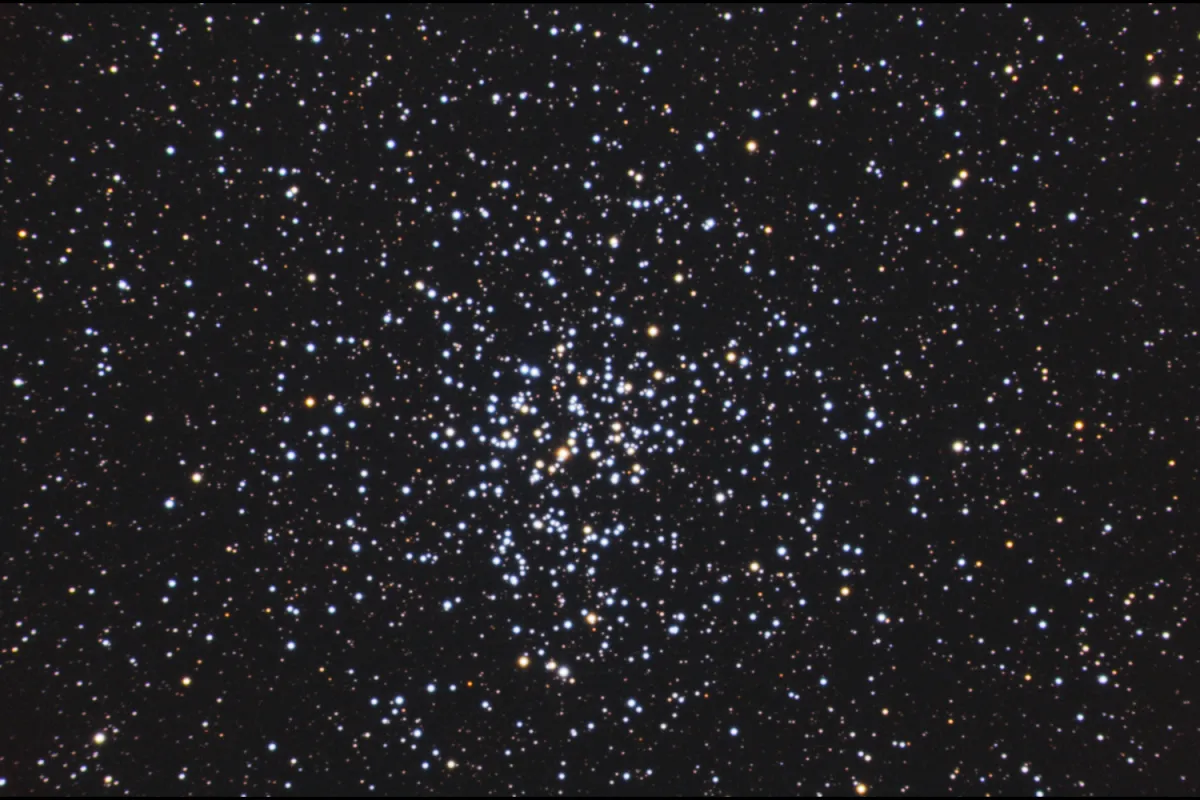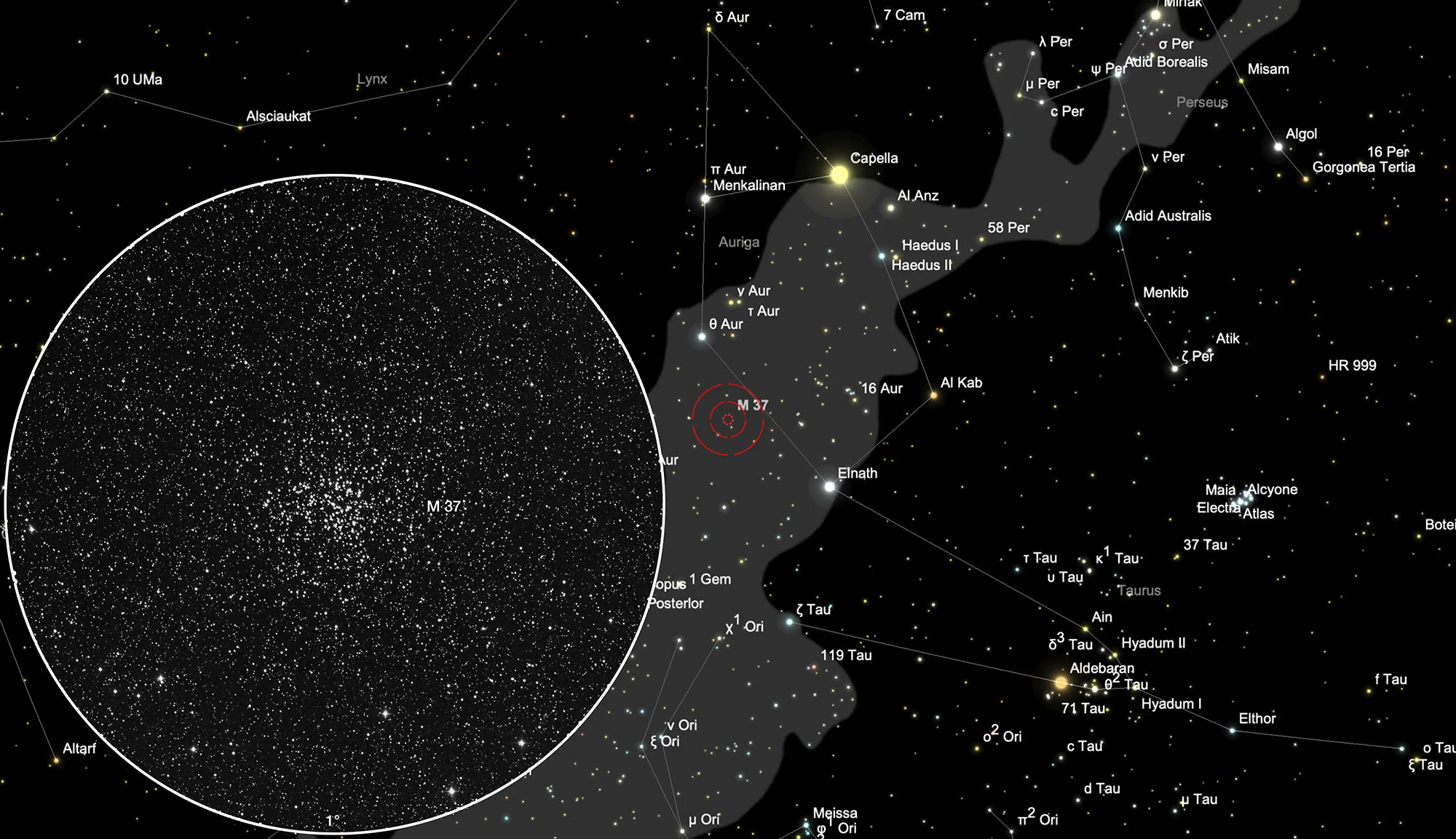Open Cluster Messier 37

History
This star cluster was first found in 1654 by Giovanni Hodierna and then rediscovered on 2 September 1764 by Charles Messier. Messier wrote: «Cluster of small stars, not far from the previous one, on the parallel of χ Aurigae; the stars are smaller, closer together, and contain nebulae; It is difficult to see the stars with an ordinary 3.5-foot telescope: this cluster is inscribed on the map of the second comet from 1771, Mem. Akad. 1777.» [281]
Physical Properties
M 37 (NGC 2099) is the most beautiful of the three bright Messier star clusters in the constellation Auriga (Fuhrmann). The other two are Messier 36 and Messier 38. It contains about 150 stars up to 12.5 magnitudes. In total, it should have more than 500 stars. The stellar population differs from that of M 36 and is believed to be older. The age is estimated to be just over 200 million years. The youngest stars are of type B9V and most of the other bright stars are main sequence A stars. The cluster also contains at least a dozen red giants. The brightest of these is 9.5 mag bright and stands out near the centre like a red ruby in a field of diamonds. The distance of the star cluster is at 1383 pc to 1400 pc, slightly more than M 36. [4, 145, 196]
| Designation | NGC 2099 |
| Type | OCL (II1r) |
| Right Ascension (J2000.0) | 05h 52m 18.3s |
| Declination (J2000.0) | +32° 33' 11" |
| Diameter | 15 arcmin |
| Visual magnitude | 5.6 mag |
| Metric Distance | 1.383 kpc |
| Dreyer Description | Cl, Ri, pCM, st L & S |
| Identification, Remarks | h 369; GC 1295; M 37; OCL 451 |
Finder Chart
The open star cluster is located east of the pentagon in the constellation Auriga and is visible to the naked eye on a dark night. The best observation time is August to May.
Visual Observation
400 mm Aperture: In 21 mm Ethos, M 37 appears as a beautiful, open star cluster that stands out clearly from its surroundings. A bright star in the centre is particularly striking. — 400 mm f/4.5 Taurus Dobsonian, Falera, SQM 21.1, 20. 9. 2025, 01:30 MESZ, Bernd Nies
